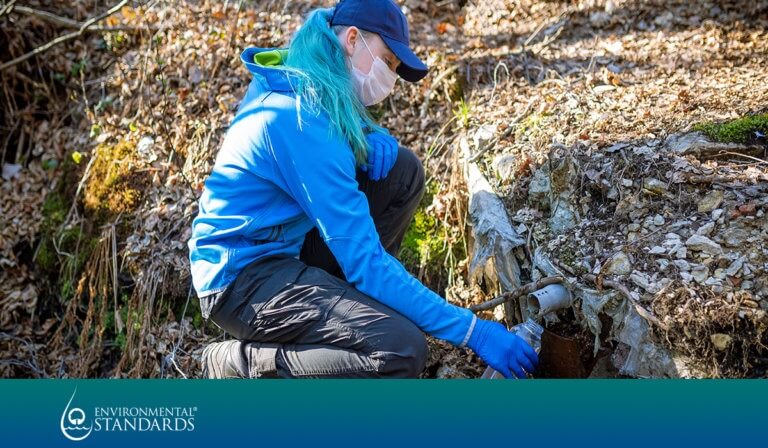
Draft Guidance on Supreme Court Groundwater Ruling Expects Few Permits
US EPA’s draft guidance for implementing the U.S. Supreme Court’s landmark ruling on when pollutants that travel through groundwater may need a Clean Water Act (CWA) permit, places the duty to obtain a permit on the facility owner or operator, but says there will only be “rare occasions” when those permits are needed.
Lara Beaven (lbeaven@iwpnews.com) writing for Inside EPA reported on this issue in a recent article. That article pointed out that US EPA does not expect the high court’s “functional equivalent” test outlined in County of Maui v. Hawaii Wildlife Fund to expand US EPA- or state-administered permitting programs in any meaningful way, according to a copy of the guidance obtained by Inside EPA. US EPA recommends the guidance, which is currently undergoing White House pre-publication review, be used to ensure the CWA National Pollutant Discharge Elimination System (NPDES) permit program remains focused on addressing direct discharges of pollutants to waters of the United States and those rare occasions where a discharge of pollutants through groundwater and into a water of the United States is truly the “functional equivalent” of a direct discharge to jurisdictional surface waters.
The guidance outlines two threshold principles for NPDES permitting generally, provides five factors to consider when conducting a functional equivalent analysis, and lists three “guiding principles” for such analysis. It also includes a series of decision trees to help identify whether a discharge warrants consideration of a functional equivalent analysis.
The article points out that at a threshold level, US EPA says the duty to apply for and obtain a NPDES permit lies with the facility owner or operator, and in the enforcement context, the burden is always on the regulatory agency to establish jurisdiction over a regulated entity. In other words, a regulatory agency must establish that there has actually been a discharge of pollutants to a water of the United States. The release of pollutants from a point source that occurs near a water of the United States does not by itself trigger the requirement for an NPDES permit. And in a footnote, the guidance says that because the duty to apply for a permit lies with the facility owner or operator, the decision of whether to apply for a NPDES permit should be informed by information or evidence available to the owner or operator.
The article also mentions that US EPA says the discharge of pollutants that reaches a water of the United States must originate from a point source — a condition that must be met before undertaking a functional equivalent analysis. Justice Stephen Breyer, writing for the 6-3 majority in the Maui case, outlined seven factors that may be relevant in conducting a functional equivalent analysis. These factors are transit time, distance traveled, the nature of the material through which the pollutant travels, the extent to which the pollutant is diluted or chemically changed as it travels, the amount of pollutant entering the navigable waters relative to the amount of the pollutant that leaves the point source, the manner by or area in which the pollutant enters the navigable waters, and the degree to which the pollution at that point has maintained its specific identity.
Five Principal Areas of Inquiry
The US EPA guidance identifies “five principal areas of inquiry” to inform a functional equivalent analysis, which are not identical to the seven factors. Those areas of inquiry are:
- The design of the system or facility from which the pollutant is released;
- Characteristics of the subsurface aquifer and hydrogeology through which the pollutant travels;
- Transit time and distance between the location at which the pollutant is released from the facility and the receiving water of the United States;
- Chemical composition and concentration of the pollutant upon leaving the point source as compared to when it reaches the receiving water of the United States; and
- The discharge’s location in the receiving water of the United States.
Discharges of pollutants directly from a pipe or other discrete conveyance into a water of the United States with little or no intervening treatment or attenuation goals often differ significantly from discharges of pollutants into a system that is engineered to treat or attenuate pollutants, the US EPA says. The guidance mentions that the design of the system can affect the transit time, chemical composition and concentration of the pollutant, and the discharge location in the receiving water of the United States.
The guidance outlines US EPA’s three guiding principles. The first is the belief that only a subset of discharges of pollutants to groundwater that ultimately reach a water of the United States are likely to be the functional equivalent of a direct discharge. The agency says NPDES permits historically have been issued rarely for such discharges, and it expects the issuance of such permits will continue to be rare following application of the Supreme Court’s functional equivalent analysis.
The second principle is that the effect that time and distance have on a discharge must be informed by scientific inquiry. The Supreme Court in its opinion said time and distance will be the most important factors in most cases, but not necessarily every case. US EPA says its experience suggests that the effect of time and distance on a discharge, and whether that discharge is ultimately the functional equivalent of a direct discharge, is informed by science, including the characteristics of the pollutant itself and the nature of the subsurface aquifer and hydrogeology. And as such, time and distance may reveal information about other areas of inquiry, such as characteristics of the subsurface aquifer and hydrogeology through which the pollutant travels, and the chemical composition and concentration of the pollutant upon leaving the point source as compared to when it reaches the receiving water.
Identifying Discharges
The third principle is that permits issued for functional equivalent discharges must be consistent with the existing NPDES permitting framework. This means that if a permit writer cannot establish basic information about the pollutant, like its concentration, or a range, at the location the pollutant reaches a water of the United States, it is unlikely that the discharge is functionally equivalent to a direct discharge. Being able to identify the pollutant being discharged, along with the location and timing of the discharge from groundwater into surface water, can be critical to issuing an enforceable NPDES permit, and the 5-year permitting cycle for the issuance and reissuance of NPDES permits implicates the time and distance area of inquiry, the agency says. For example, the guidance says that if scientific analysis suggests that a pollutant released to groundwater will not reach a water of the United States within the immediately following 5 years, an NPDES permit issued for a future discharge would likely not be needed under the CWA. In contrast, if such analysis demonstrates that a pollutant will reach a surface water relatively quickly, at a predictable location, and in measurable concentrations, an NPDES permit may be appropriate and consistent with the CWA.

